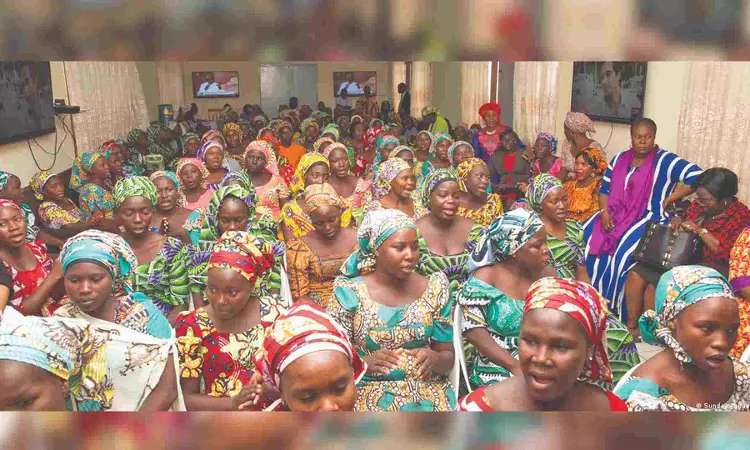Nigeria's shame: The Chibok girls: What happened in April 2014?
But the government-run school in Chibok opened specially for students who were taking their WAEC, or final exams. Many girls had traveled to the school from surrounding villages, where schools remained shuttered.

People of Chibok
During the night of April 14, 2014, dozens of fighters from the Boko Haram Islamist militant group stormed a school dormitory for girls in the remote town of Chibok, a small Christian enclave in the majority-Muslim north of Nigeria. The 276 schoolgirls, mostly aged between 16 and 18, were herded at gunpoint through the forest to waiting trucks after the militants set fire to the school buildings.
Within hours of the abductions, 57 girls managed to escape. Some hid in the bushes, while others jumped out as they drove through the dark night of the Sambisa Forest that had become Boko Haram’s hideout.
One of those who managed to escape told Human Rights Watch that an insurgent asked the schoolgirls in the truck: “What kind of knowledge are you looking for here [at the school]? Since you are here to look for Western education, we are here to confront it and teach you the ways of Islam.” The name of the militant group, Boko Haram, is usually translated as “Western education is forbidden.” Attacks by Boko Haram had already caused mass closures of schools in region, including Chibok’s Government Girls Secondary School in March that year. The militant group started an armed rebellion against Nigeria’s government in 2009, wanting to carve out an Islamic state. It was known for its hostility to non-Quranic education.
But the government-run school in Chibok opened specially for students who were taking their WAEC, or final exams. Many girls had traveled to the school from surrounding villages, where schools remained shuttered.
Despite Borno State being under emergency rule, no soldiers were stationed at the school and the two watchmen guarding the compound fled as the fighters approached. Another group of Boko Haram militants fired on the 17 security forces based in the town center, who were overwhelmed and retreated into the forest. Panicked villagers who saw the Boko Haram convoy roll through their communities on their way to Chibok also called the military base in Borno State’s capital, Maiduguri, several hours before the assault, according to investigations by Amnesty International and others. But the military was unable to muster troops to travel the 125 kilometers (78 miles) to Chibok, allowing Boko Haram to snatch the unprotected girls.
Dozens of the girls escaped shortly after they were captured, after which the group’s leader, Abubakar Shekau, threatened to sell the remaining girls off as slaves. Many of those held by Boko Haram were forced to convert to Islam if they were Christian, marry their captors and bear them children. They were often married several times as one husband after another was killed in clashes.
Little was heard of the girls in the following years, with two girls found between May and September 2016. But then came several mass releases, brokered by the International Red Cross and the Swiss government, reportedly as part of a prisoner swap.
More than 100 girls have since been freed. Accounts from those who have returned talk of beatings, perpetual hunger and worse. They were held mostly in camp huts hidden in the Sambisa Forest.
Boko Haram attacked some 50 schools in the year before the Chibok raid and kidnapped dozens of children. But several factors make the abduction of the Chibok girls a continued focus of attention 10 years later. Chibok signalled the beginning of large-scale abductions in Nigeria, something that is still happening today — although a wider number of players are involved in kidnappings.



